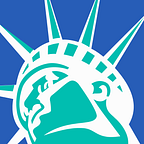To Close the Digital Divide, We Must Continue to Invest in Tribal Communities
Candace Milner, Public Citizen
November was Native American Heritage Month. While unfortunately this year’s celebration of heritage and culture coincided with legal attacks on Native Americans and tribal communities’ sovereignty, forward progress was achieved toward addressing the scarce infrastructure investments that have left many tribal communities systemically denied from accessing essential technology and internet resources.
The “digital divide” is term for the gap in access to technology and the internet experienced by under-resourced communities across the nation. Inequitable access to smartphones, Wi-Fi, broadband internet, and computers keeps communities from accessing vital information and resources that are stored online. Low-income, rural, and BIPOC communities are disproportionately impacted by the digital divide. Native American communities on tribal lands experience the greatest barriers to digital access.
Only 67% of tribal lands have access to broadband internet compared to 98% of urban Americans. In the majority of tribal lands that have some access, the speeds of their broadband is considered to be less than “minimally acceptable” by the Federal Communications Commission (FCC). In 2016, the FCC announced that, a significant majority of Americans living on tribal lands in rural areas lack access to advanced telecommunications capability, including high-speed internet at home. Surveys conducted by the American Indian Policy Institute reported that 33% of residents on tribal land relied on internet service from a smartphone at home and 31% of respondents stated that their connection was spotty, or they had no connection at all at home. The Covid-19 pandemic worsened the digital divide in tribal communities as institutions that many communities depend on for access to internet, like public libraries and schools, were closed.
The negative impact of the digital divide on tribal communities is undeniable. Community members have pointed to bad connections as the cause for children missing school lessons and elders driving over 100 miles away from home to attend medical appointments that could have otherwise taken place via telehealth. Government officials including Congress and the Biden administration have begun to implement policies that give much needed relief to these communities. Congress recently passed the Infrastructure Investment & Jobs Act that provided a large pot of money to be invested in expanding access to internet across the country. The bill awarded $2 billion directly to the Tribal Broadband Connectivity Program. This program provides grants for broadband deployment on tribal lands, broadband affordability, and digital inclusion that will ultimately make difficult broadband infrastructure projects that were previously deemed infeasible possible.
Earlier this year, the Biden administration announced its Internet for All initiative, which will invest $45 billion of infrastructure funds to provide affordable reliable internet for everyone in America by the end of the decade. The initiative is housed in the U.S. Department of Commerce’s National Telecommunications and Information Administration (NTIA). This program will build infrastructure, teach digital skills, and provide technology to ensure that the goal of internet for everyone is a reality. The Biden administration has taken additional steps to target tribal communities in these initiatives. NTIA has announced more than $500 million of funding being used to bring high speed internet to tribal communities. In August, 470 tribes across the nation, which is over 80% of federally recognized tribes, indicated they would like to participate in the digital equity planning program.
In addition to the Dept. of Commerce’s programs, the government is addressing the problem through an FCC enhanced competition incentive program that offers incentives to larger carriers like AT&T or Verizon to make their wireless spectrum available to smaller carriers and tribal groups so they can establish service in underserved and tribal areas. The FCC hopes that these incentives coupled with the grant initiatives from NTIA will help close the digital divide.
While the government is just responding to the digital divide, tribal communities and funders have been engaged in noteworthy grassroots work to bridge this divide. For example, Michelson 20MM launched the tribal broadband boot camp where tribal leaders are given hands-on skills like working with hardware, networking, and system planning in order to become self-reliant in creating and maintaining broadband in their communities. Additionally, they are provided with information on how to access federal funding opportunities to support their infrastructure efforts. The rate of response to federal grant programs and push for community-driven solutions highlight how imperative these programs are for tribal communities.
Access to quality internet connections is key to the economic and educational success of tribal communities. As tribal leaders and activists continue to push innovative solutions, it is vital that the Biden administration continue to invest in closing the digital divide on tribal lands and ensuring affordable and reliable high-speed internet for all.
